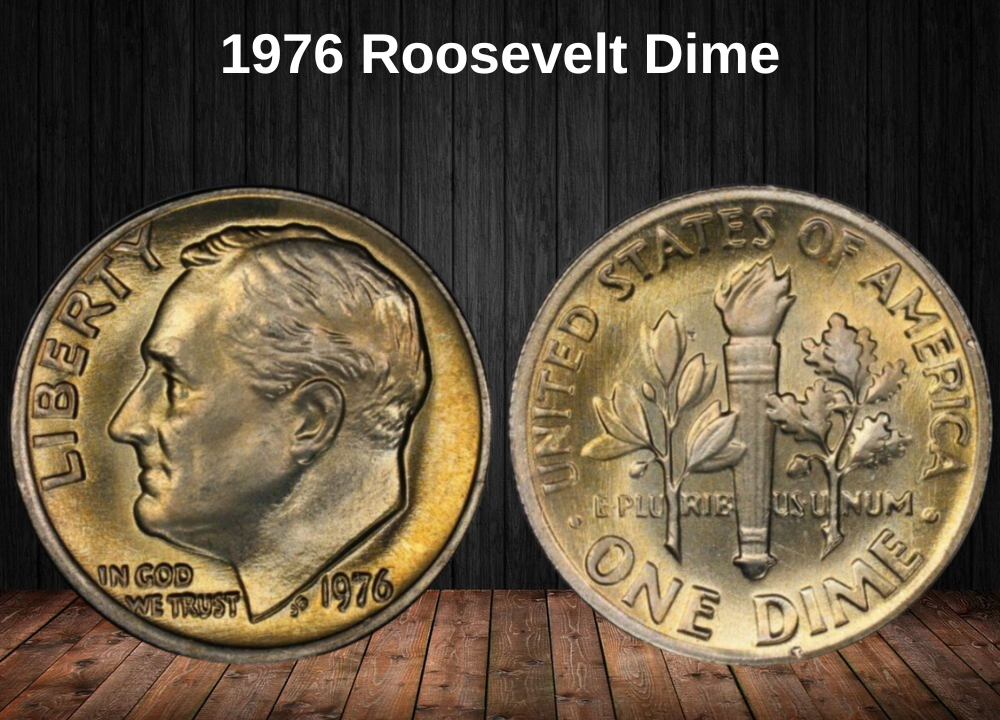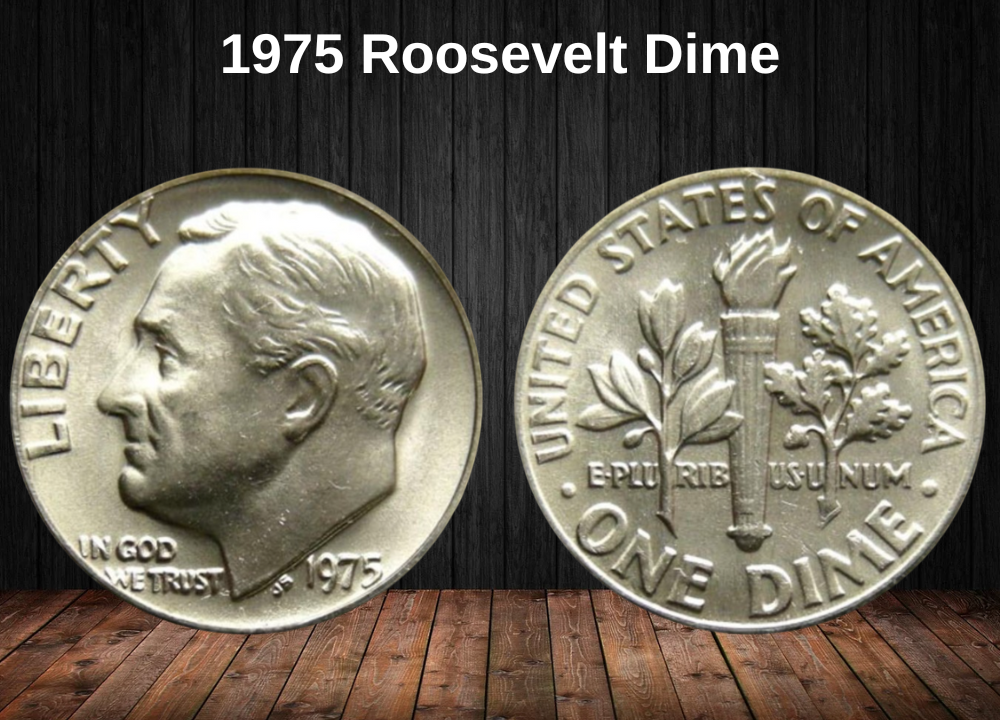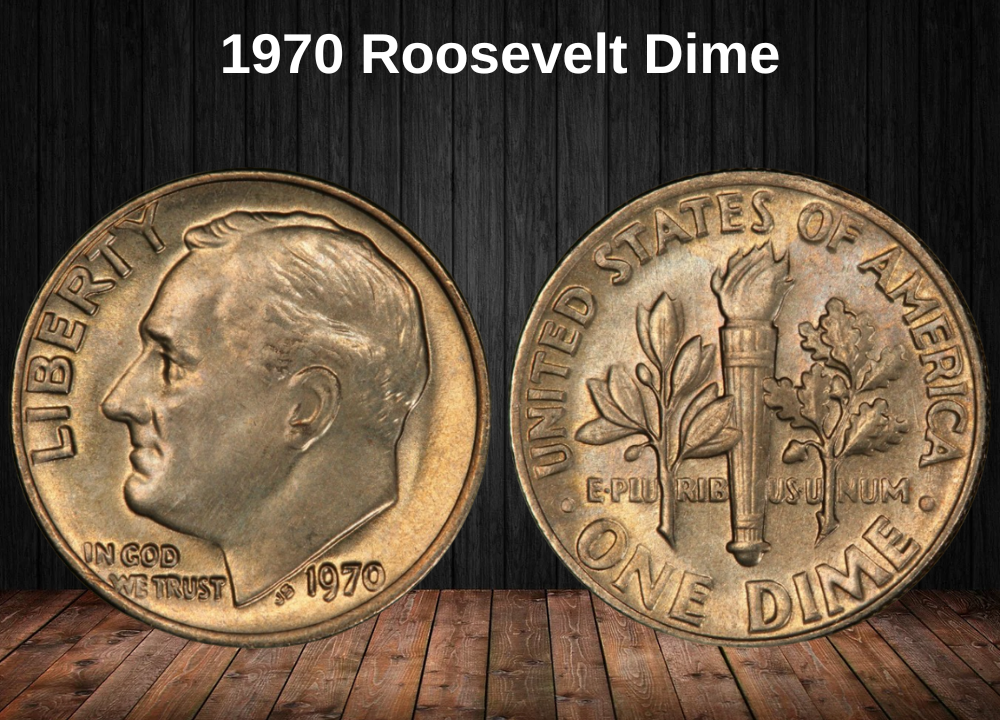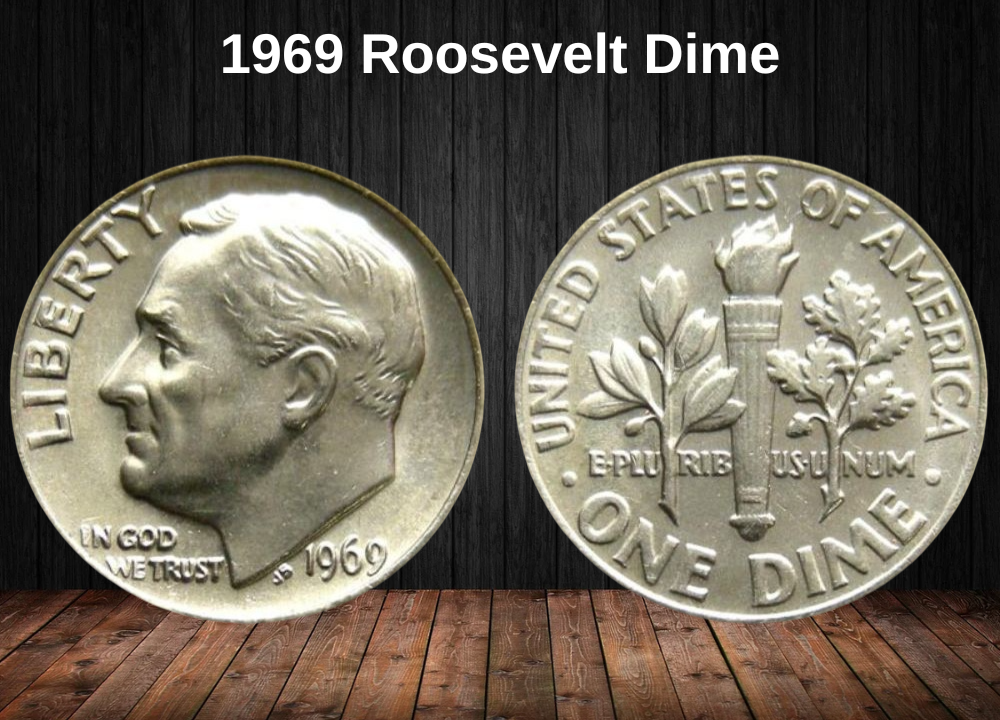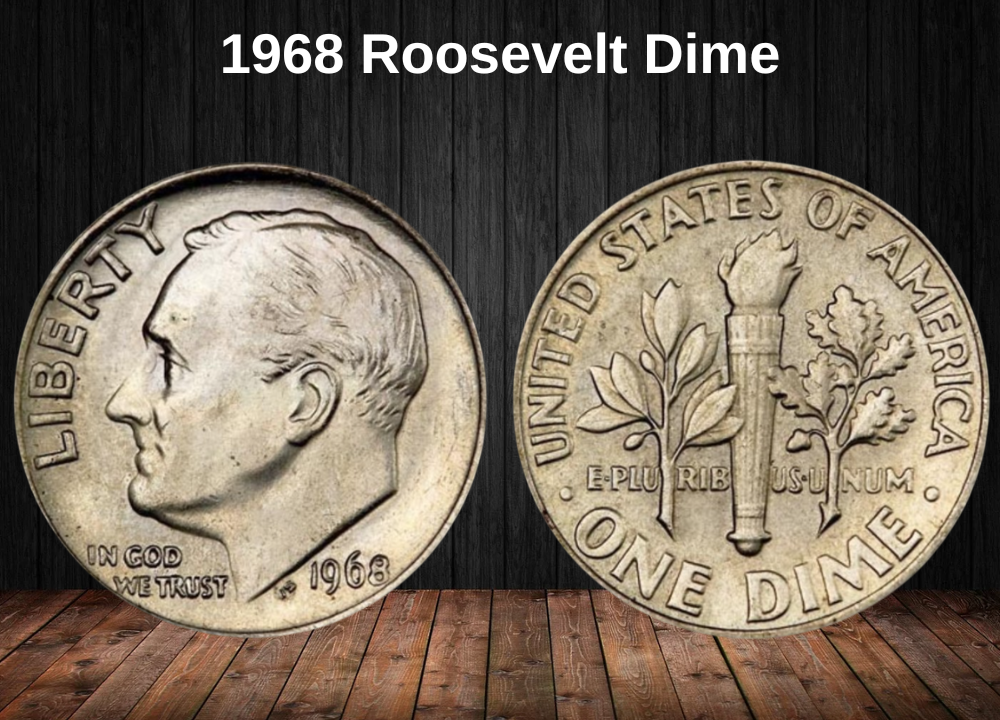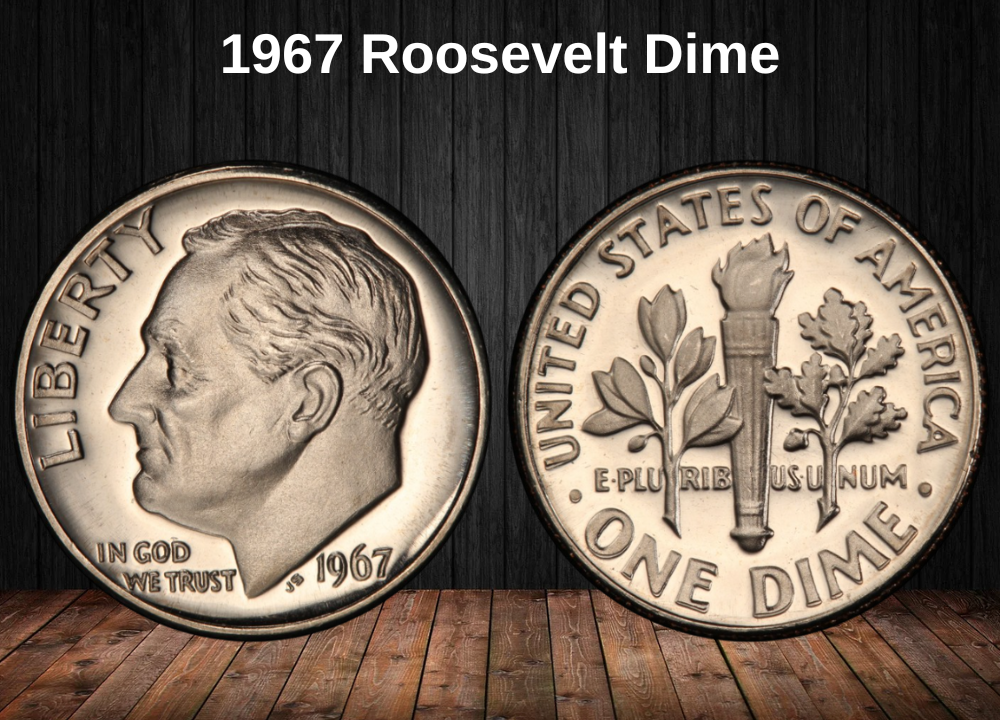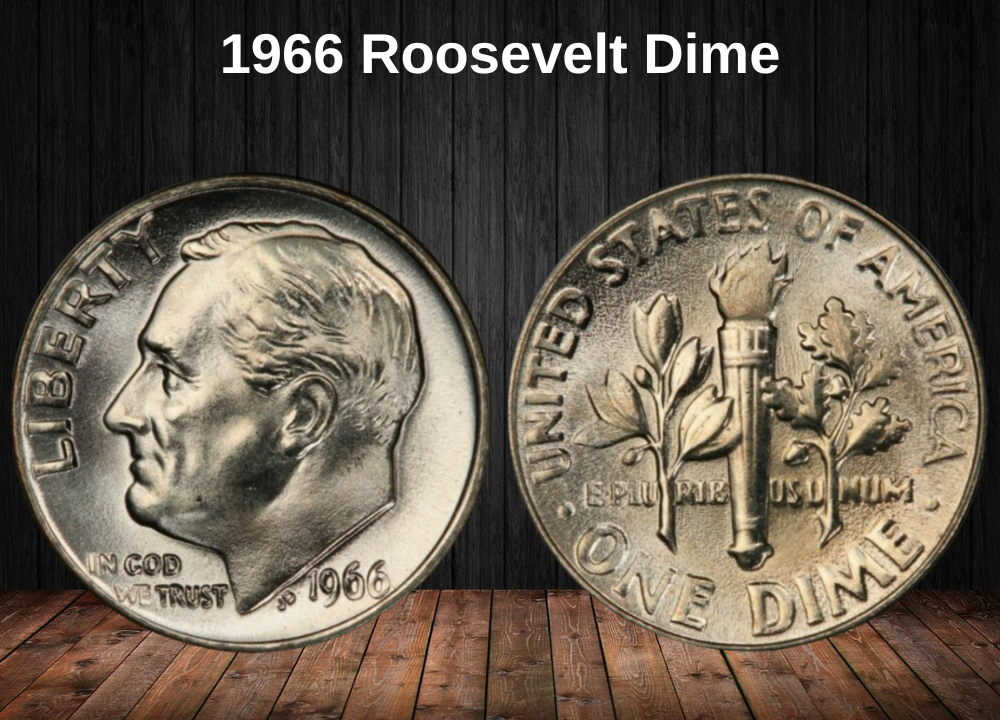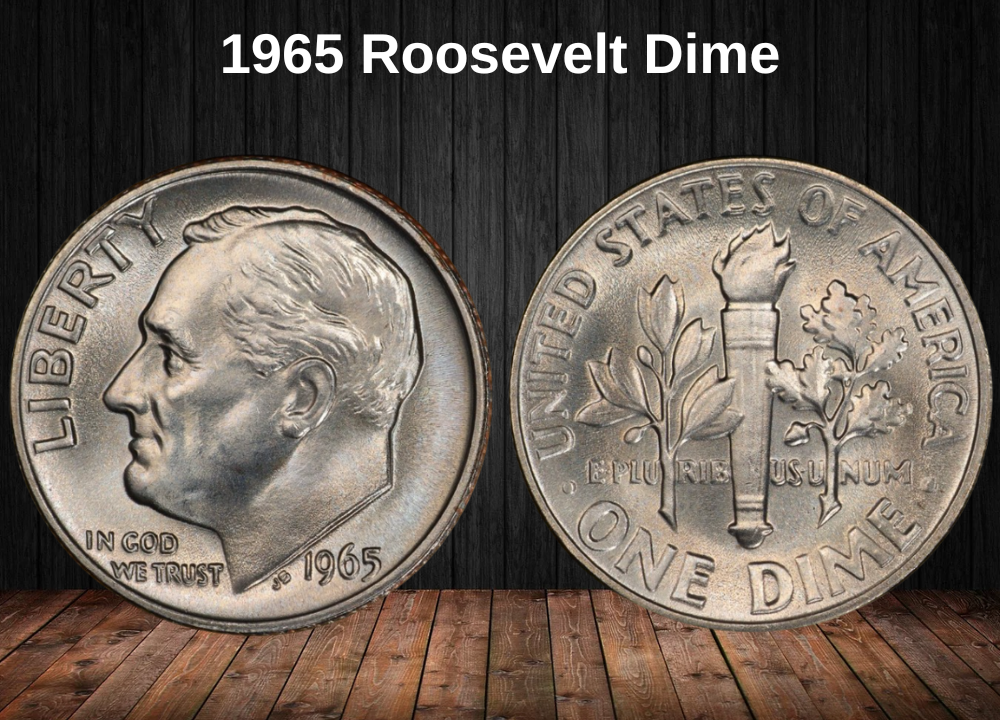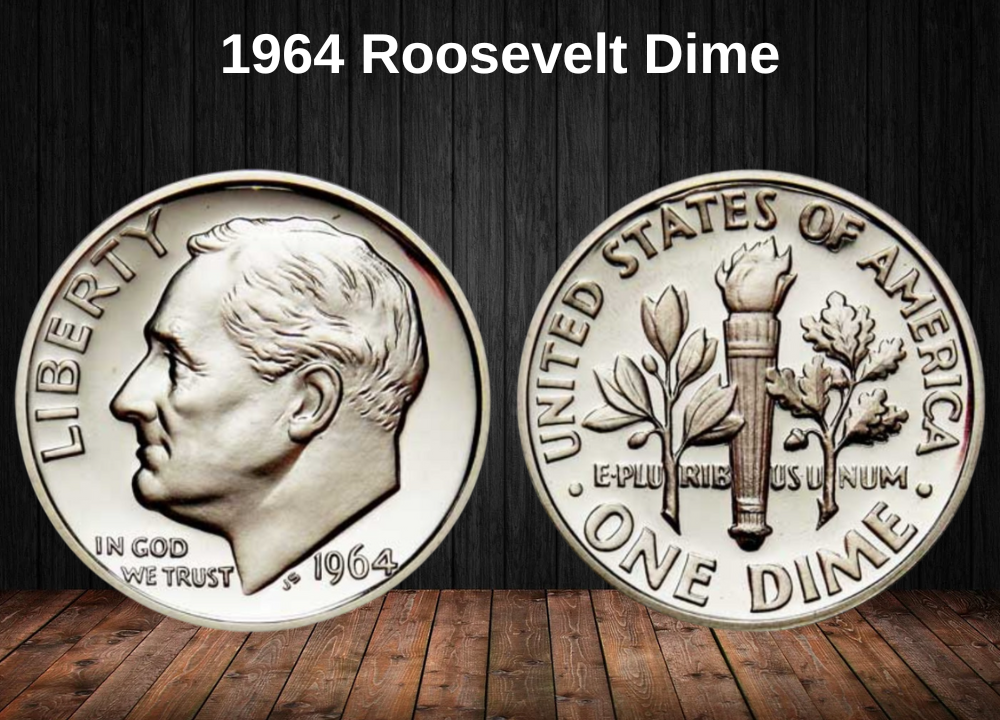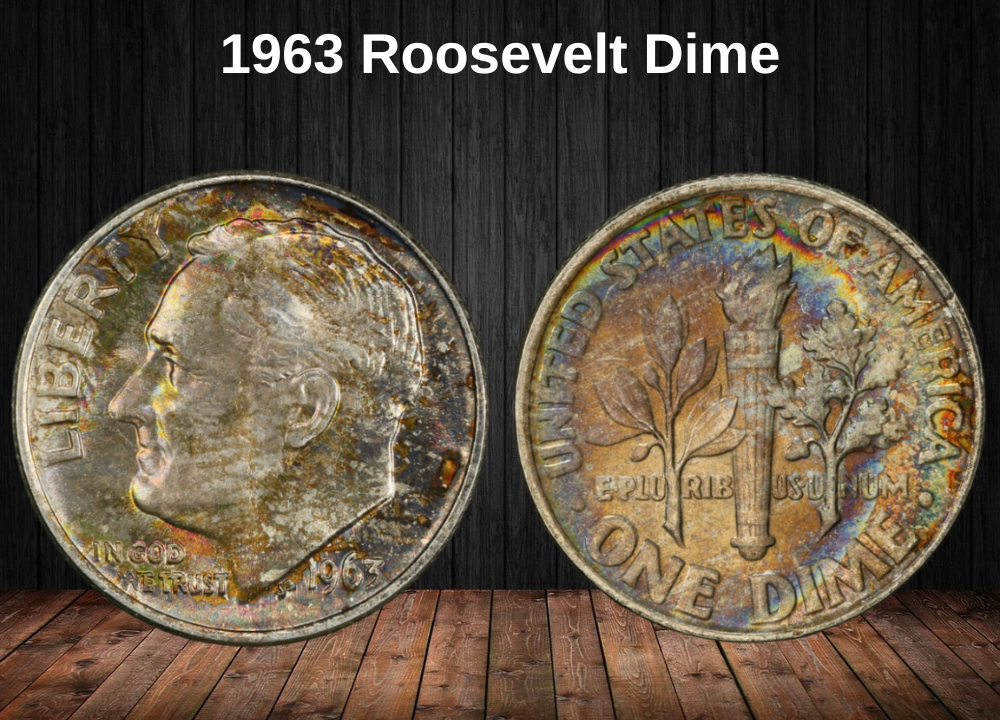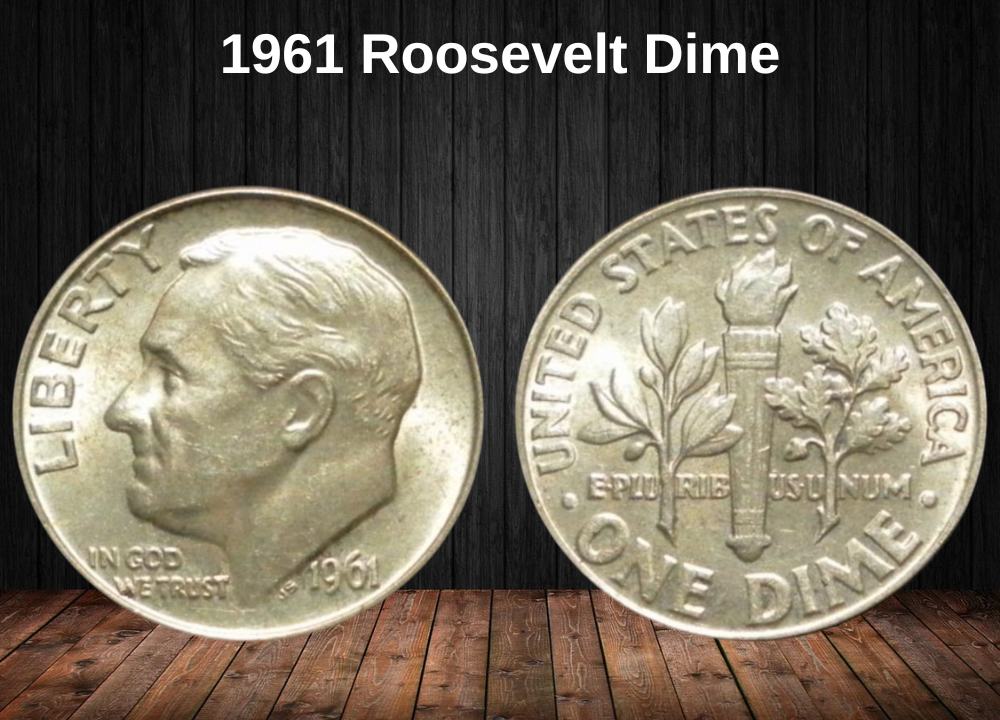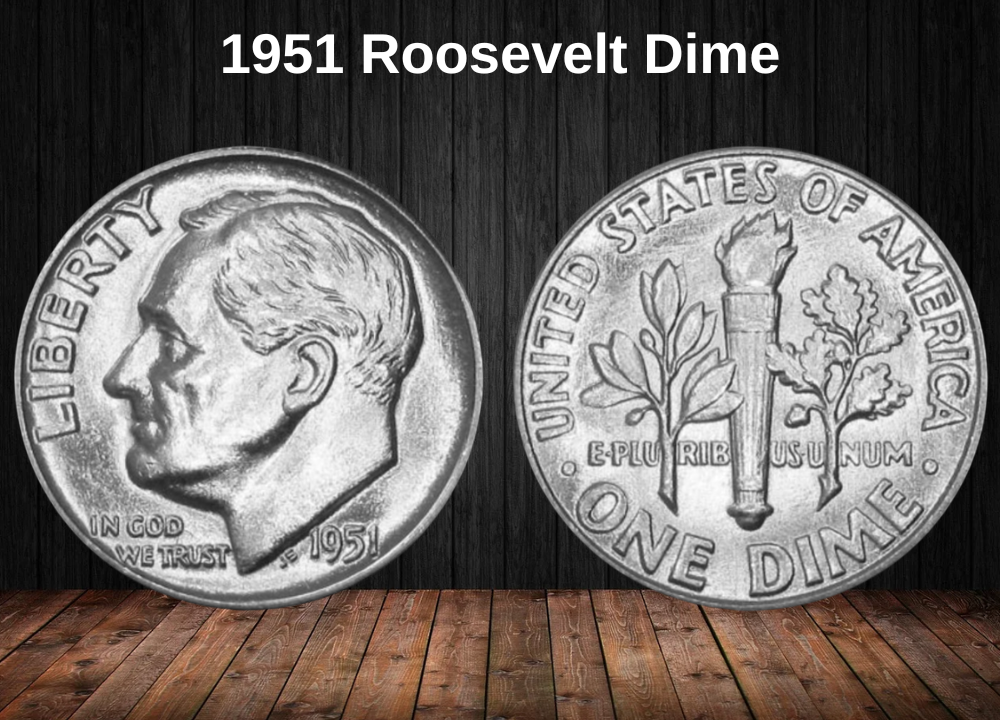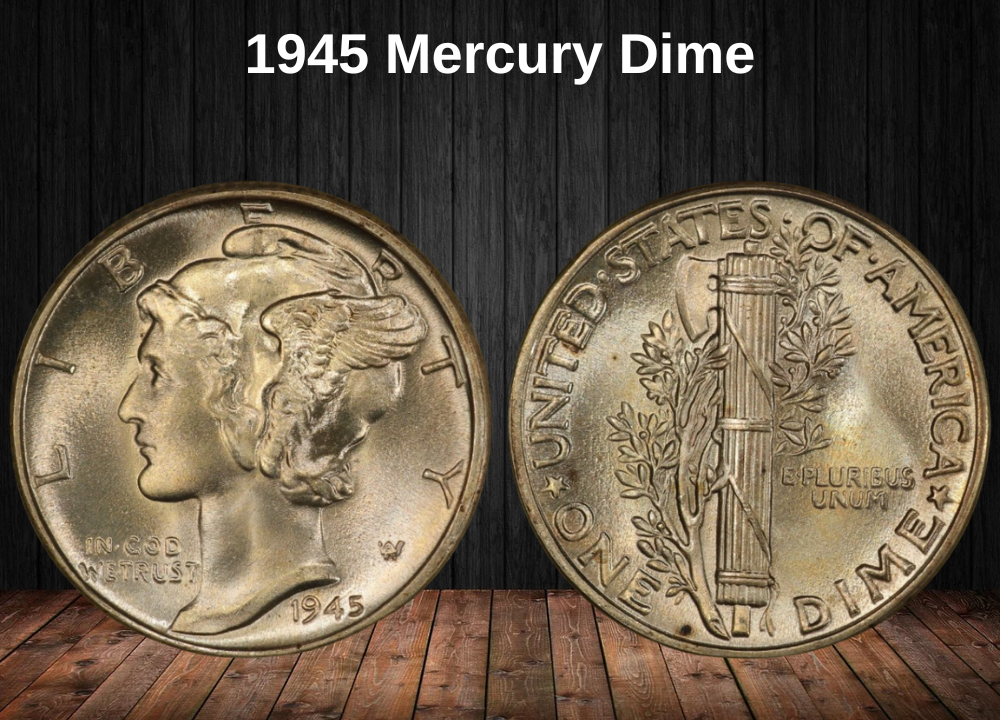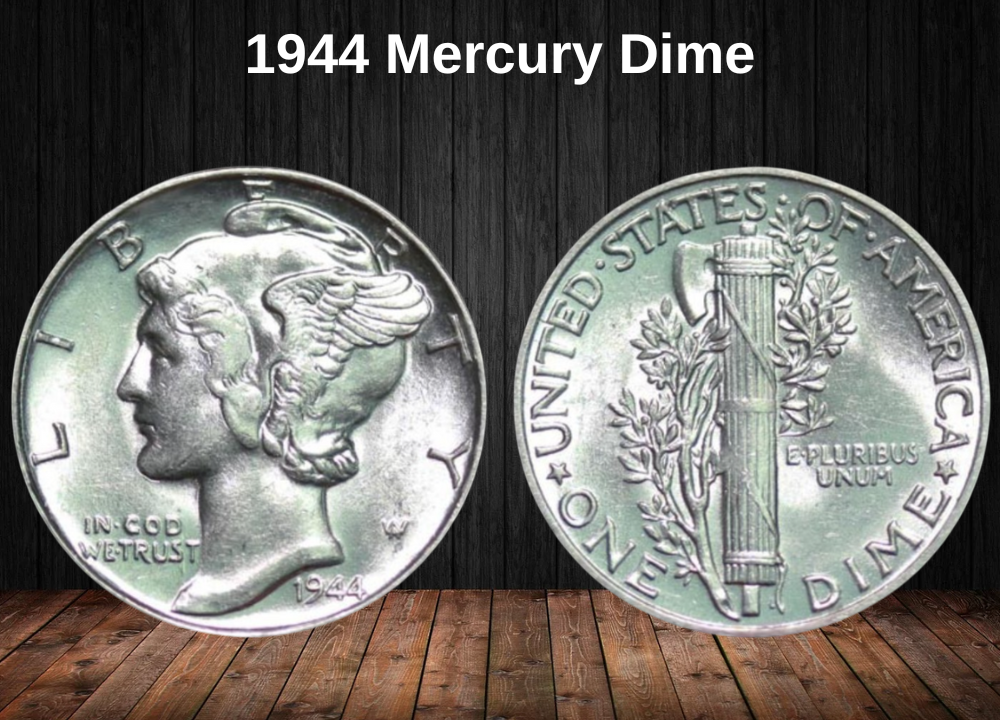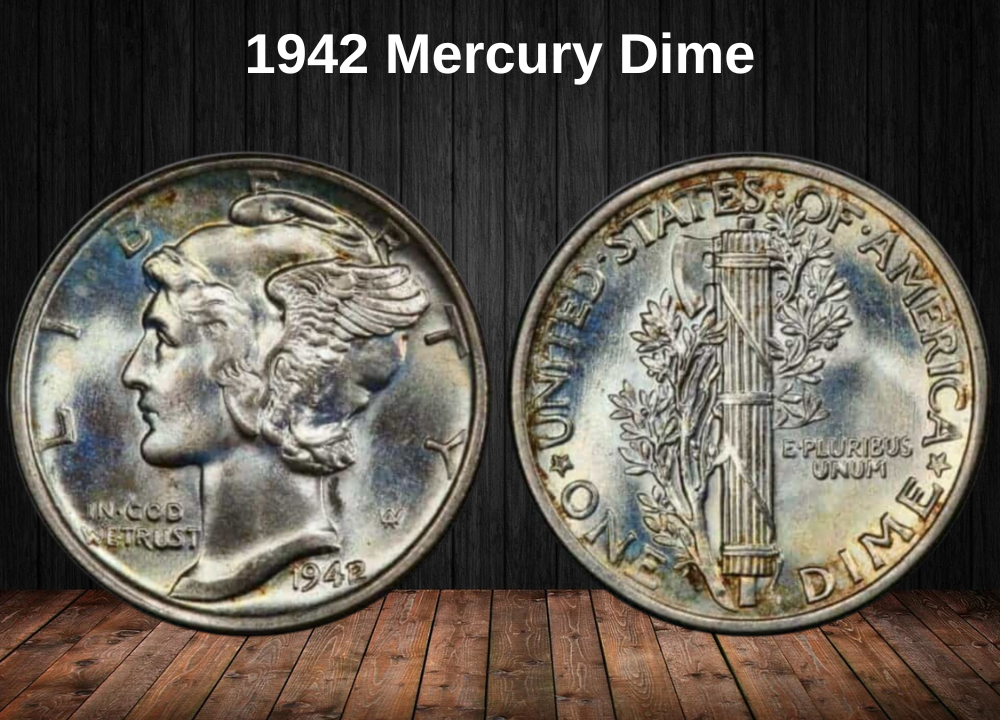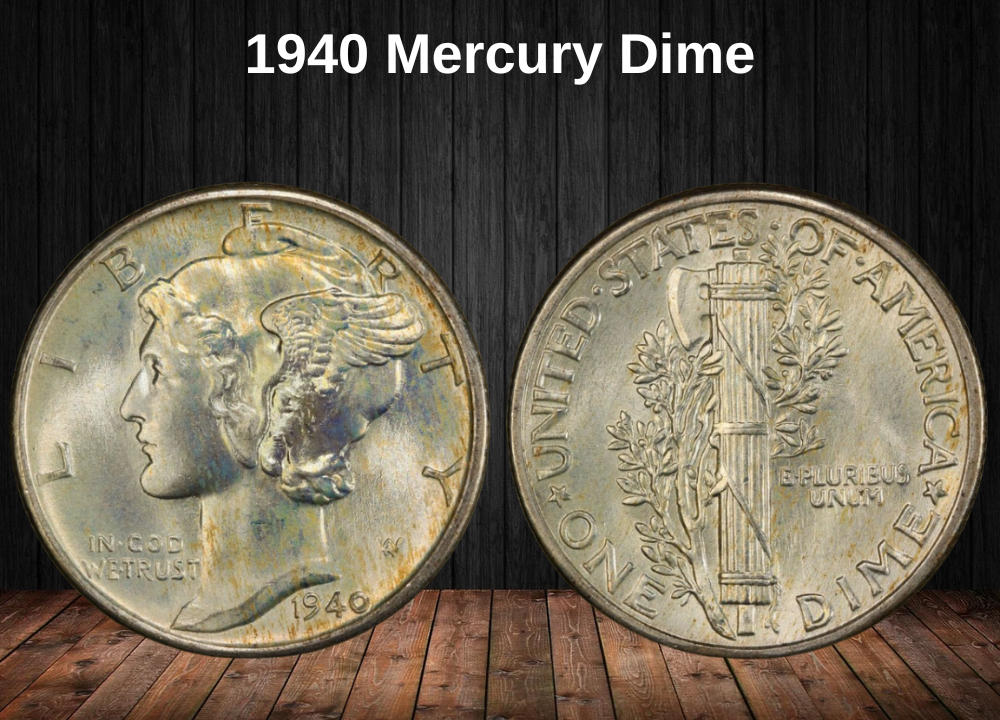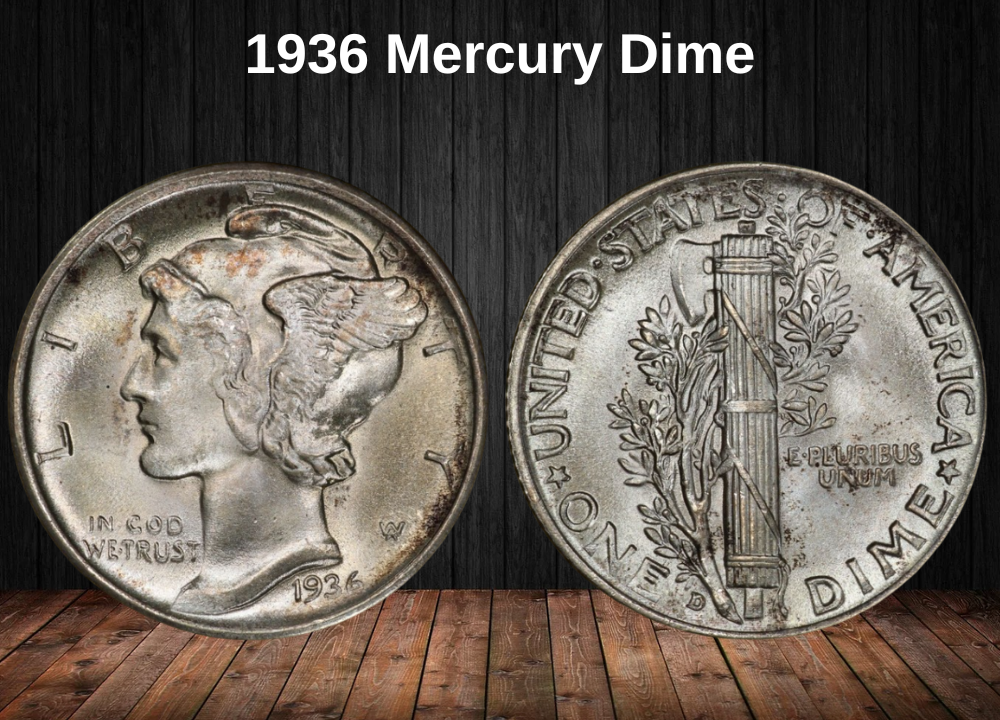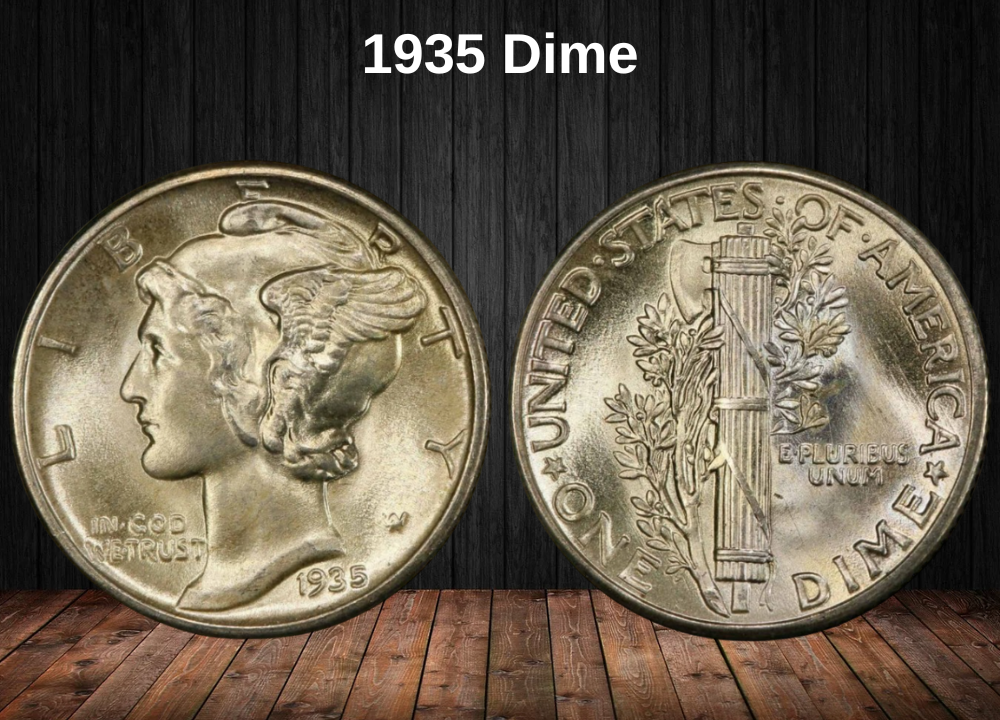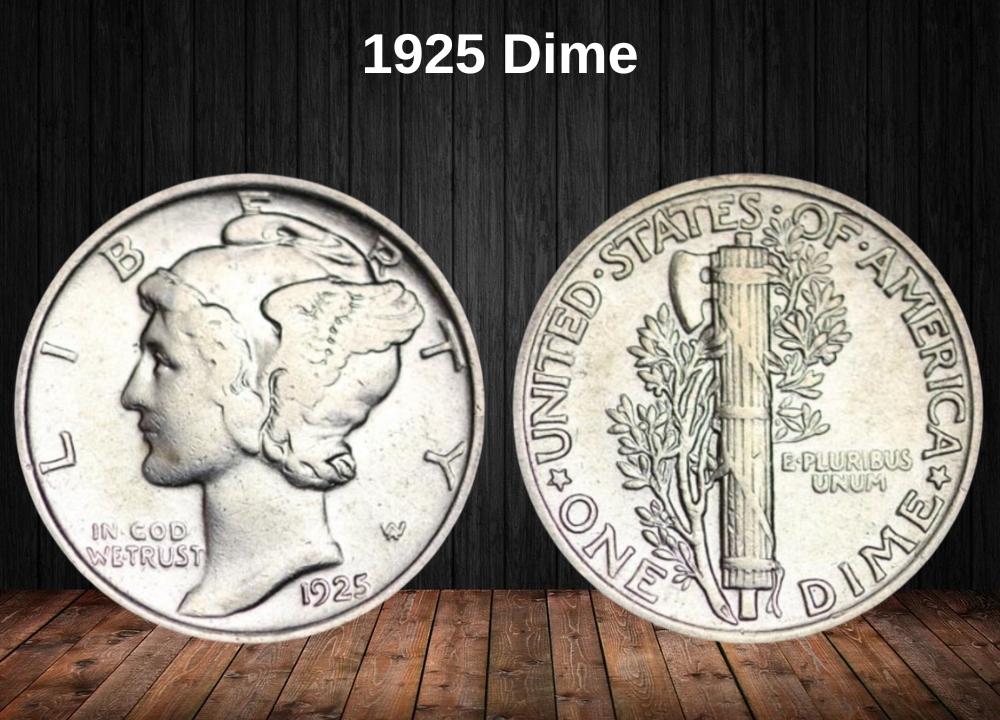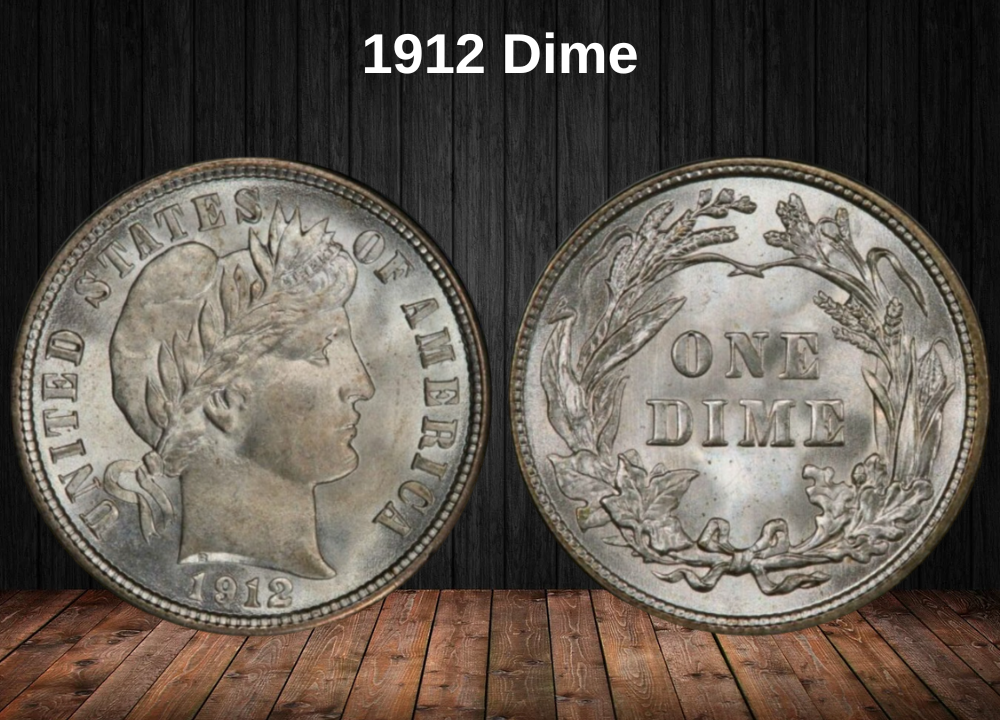In U.S. coinage, the dime—America’s 10-cent coin—takes its nickname from the Old French word dîme, meaning “tenth” or “tithe.” The year 1916 was a unique transitional period, as it saw the end of the Barber dime series (1892–1916) and the introduction of the Mercury dime (1916–1945).
The Mercury dime’s design featured Lady Liberty wearing a winged cap, but her appearance was so androgynous that many mistook the figure for the Roman god Mercury, giving the coin its popular nickname. While the new design was rolling out, 1916 Barber dimes were still being struck, making this a dual-design year of interest for collectors.
Both designs are now collectible, but certain varieties—especially high-grade examples or coins with Full Bands on the Mercury dime’s reverse—are extremely valuable.
1916 Dime Value Chart
| Coin Type & Variety | VF 25 | AU 50 | MS 60 | MS 65 | MS 67+ | MS 68+ |
|---|---|---|---|---|---|---|
| 1916 No Mint Mark Barber Dime | $30 | $75 | $210 | $475 | $4,500 | – |
| 1916-S Barber Dime | $30 | $75 | $210 | $600 | $15,000 | – |
| 1916 No Mint Mark Mercury Dime | $14 | $25 | $60 | $190 | $1,750 | – |
| 1916 No Mint Mark Mercury Dime (Full Bands) | – | – | $80 | $375 | $2,500 | $27,500 |
| 1916-D Mercury Dime | $5,750 | $12,000 | $15,500 | $33,500 | – | – |
| 1916-D Mercury Dime (Full Bands) | – | $12,500 | $20,000 | $70,000 | $300,000 | – |
| 1916-S Mercury Dime | $23 | $42 | $70 | $335 | $6,500 | – |
| 1916-S Mercury Dime (Full Bands) | – | – | $110 | $1,050 | $14,500 | – |
History of the 1916 Dime
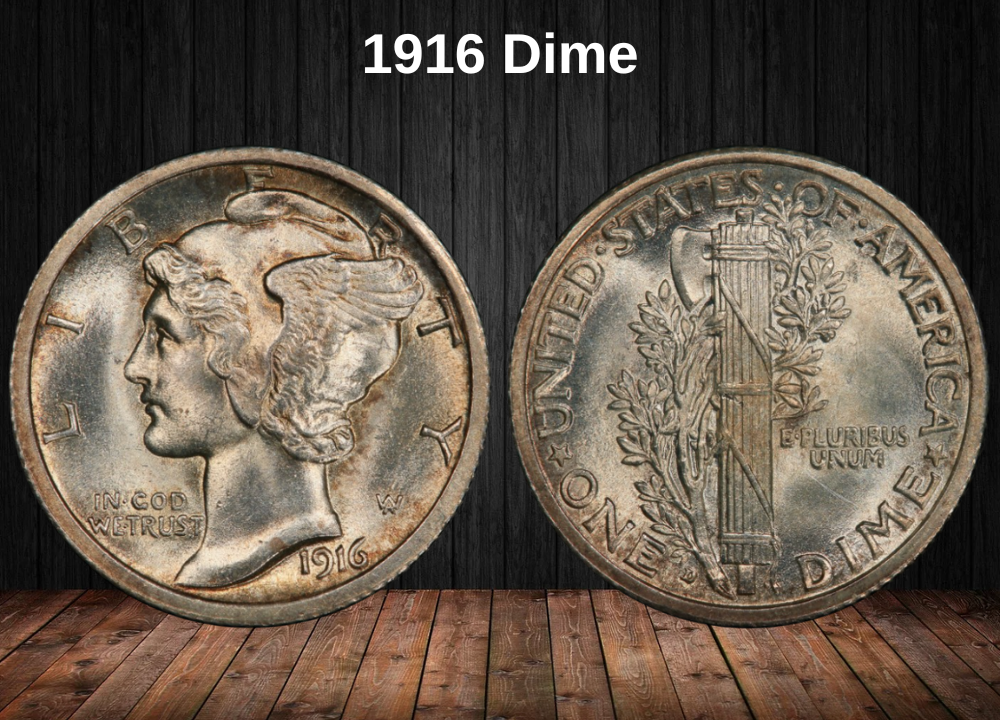
The dime holds a unique place in U.S. coinage history as the dividing line between America’s base-metal coins and its precious-metal coins. For decades, coins valued above a dime were made from silver or gold, while those below a dime—such as nickels, pennies, and small cent denominations—were made from base metals like copper, nickel, or bronze.
Before 1866, even the half dime was struck in silver, but after the Civil War, it shed its silver content. Dimes and larger silver coins were given reeded edges to deter criminals from shaving small amounts of metal off the edges to profit from the precious metal content. Smaller base-metal coins did not need this protection.
Another distinction is in denomination labeling: coins below a dime are marked in cents, while coins valued at a dime or higher are described in dollars (e.g., quarter dollar, half dollar). The dime was the smallest silver coin in circulation for centuries, making it physically smaller than any other coin to ensure its melt value never exceeded its face value.
Today’s dimes no longer contain silver—they are clad coins made of 91.67% copper and 8.33% nickel, like most modern U.S. coinage. The only exception among circulating coins is the nickel, which contains 75% copper and 25% nickel.
Theodore Roosevelt’s Coin Beautification Project
The Mercury dime (Winged Liberty Head dime) is often praised as one of the most beautiful coins in American history. Its creation was part of President Theodore Roosevelt’s 1904 initiative to beautify U.S. coinage, a project continued by his successor, President William Howard Taft.
The design came from sculptor Adolph A. Weinman, who won a competition organized by the U.S. Mint. Weinman was a former student of the legendary Augustus Saint-Gaudens and worked alongside other prominent sculptors of the era, including Victor David Brenner (designer of the Lincoln cent) and James Earle Fraser (designer of the Buffalo nickel). These artists collectively replaced the older Barber designs, fulfilling Roosevelt’s vision for more artistic coinage.
The Dual Dimes of 1916
Despite the push for the new design, Charles E. Barber, the long-serving Chief Engraver of the U.S. Mint, resisted retiring his own coinage designs. His opposition and procedural delays slowed the Mercury dime’s debut, forcing the Mint to continue producing Barber dimes in 1916 to meet circulation demand.
As a result, both Barber dimes and Mercury dimes were struck and circulated in the same year—a rare occurrence in U.S. numismatics.
The Mercury dime got its nickname because many mistook Weinman’s depiction of Lady Liberty in a winged Phrygian cap for the Roman god Mercury. In reality, the portrait was modeled after Elsie Stevens, wife of poet Wallace Stevens. The reverse design featured a fasces (a bundle of rods bound around an axe) symbolizing unity and strength, which some people misinterpreted, calling it the “golf dime” or “battle axe dime.”
Features of the 1916 Dime
In numismatic terminology, the heads side of a coin is called the obverse, the tails side is the reverse, and the thin outer portion is the edge. The raised border is the rim (or collar), inscriptions are referred to as mottos or legends, and the main images are called devices. The blank space around the devices is known as the field. Before striking, coin blanks are called planchets, and many coins—like the dime—feature small ridges along the edge called reeds.
The Obverse of the 1916 Mercury Dime
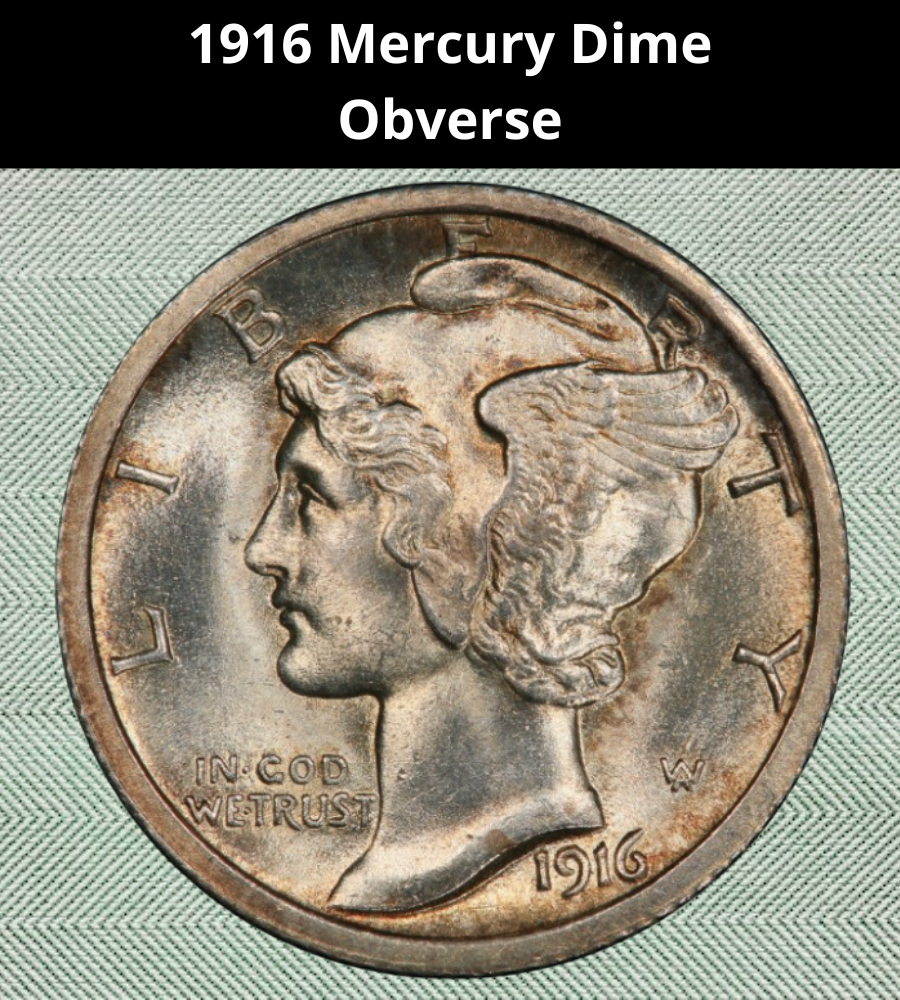
The first-year Mercury dime obverse depicts Miss Liberty wearing a winged Phrygian cap, symbolizing freedom of thought. The word LIBERTY curves around the top edge, while the motto IN GOD WE TRUST appears under her chin. Behind the portrait are the stylized initials AW for designer Adolph A. Weinman. The date 1916 is placed at the lower right.
The Reverse of the 1916 Mercury Dime
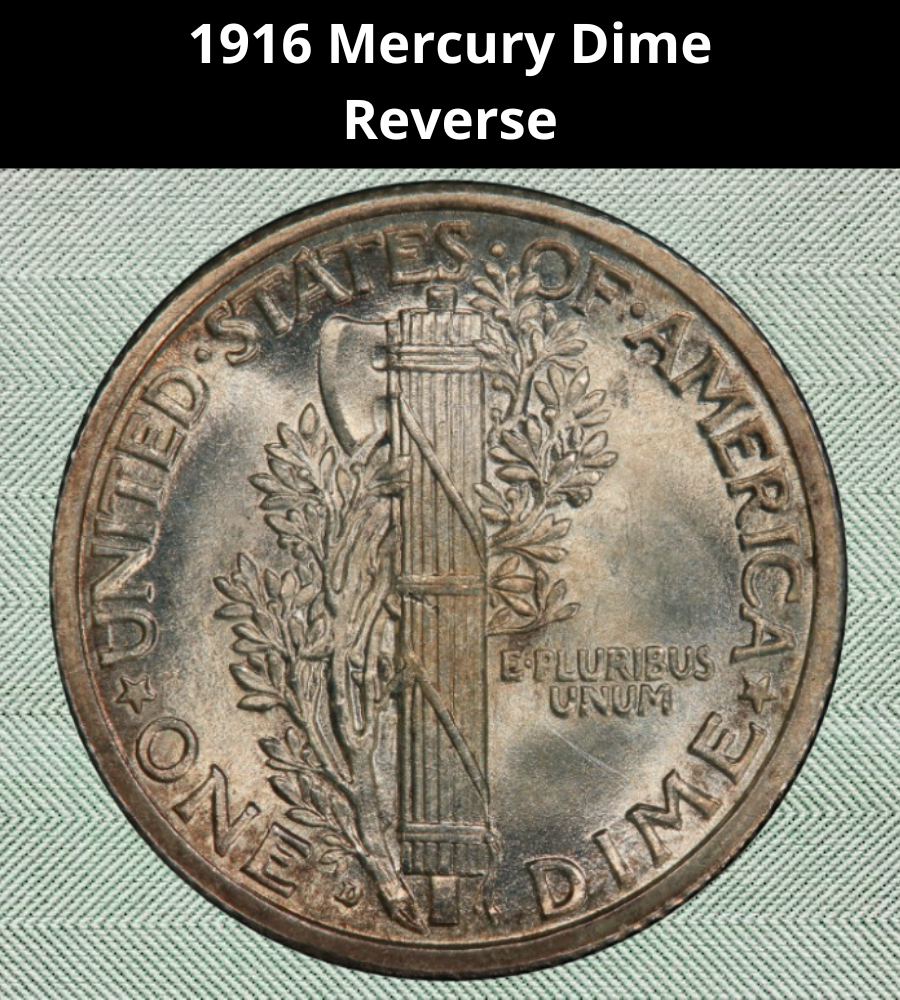
The reverse design features a fasces—a bundle of rods bound together with an axe blade, symbolizing unity and strength—wrapped in an olive branch representing peace. The legend UNITED STATES OF AMERICA arcs across the top, with ONE DIME at the bottom. The mint mark appears after the word ONE. Two small stars separate the legends, and the motto E PLURIBUS UNUM is inscribed along the right side.
Other Features of the 1916 Mercury Dime
- Composition: 90% silver, 10% copper
- Diameter: 17.91 mm (0.705 in)
- Thickness: 1.35 mm (0.053 in)
- Weight: 2.5 g (0.08038 troy oz)
- Edge: Reeded, 118 reeds
- Notable Fact: 1916 marked the debut of the Mercury dime (officially called the Winged Liberty Head dime), replacing the unpopular Barber dime after 24 years of production.
The Obverse of the 1916 Barber Dime
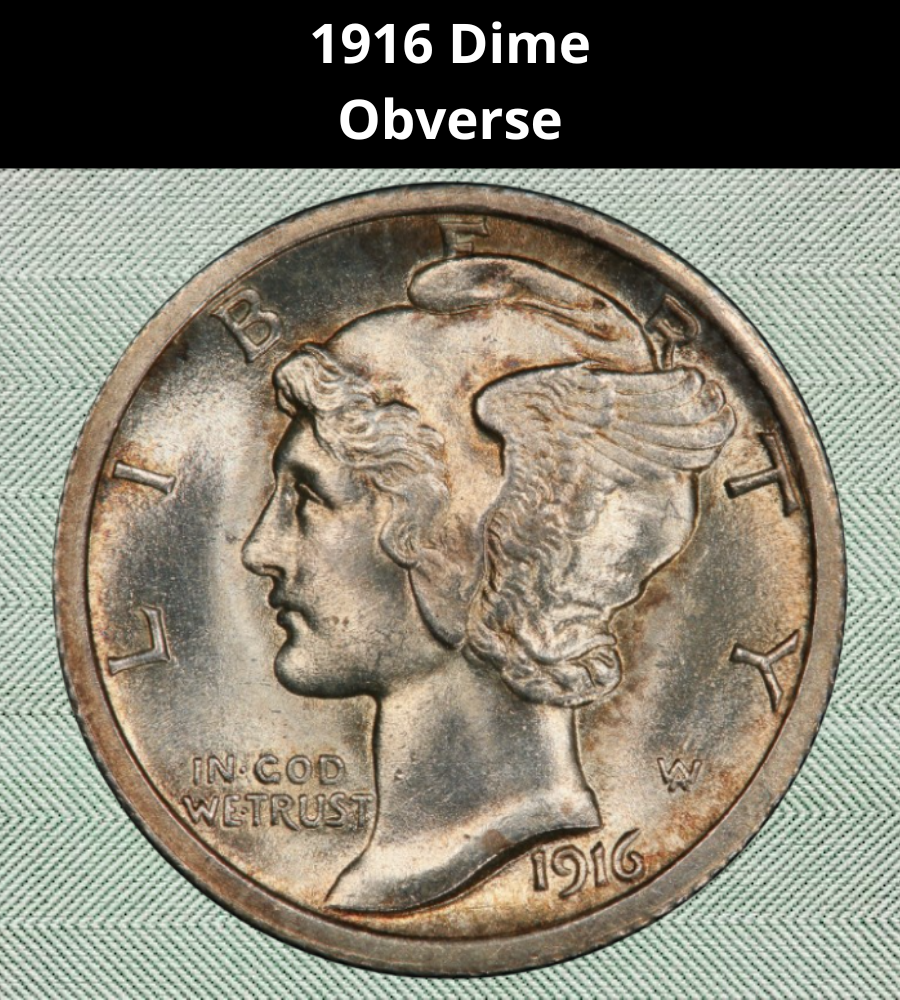
The Barber dime obverse portrays Lady Liberty facing right, wearing a Phrygian cap adorned with an olive wreath and a headband inscribed with LIBERTY. The words UNITED STATES appear to the left behind her head, and OF AMERICA appears to the right in front of her face. The date 1916 is centered along the bottom.
The Reverse of the 1916 Barber Dime
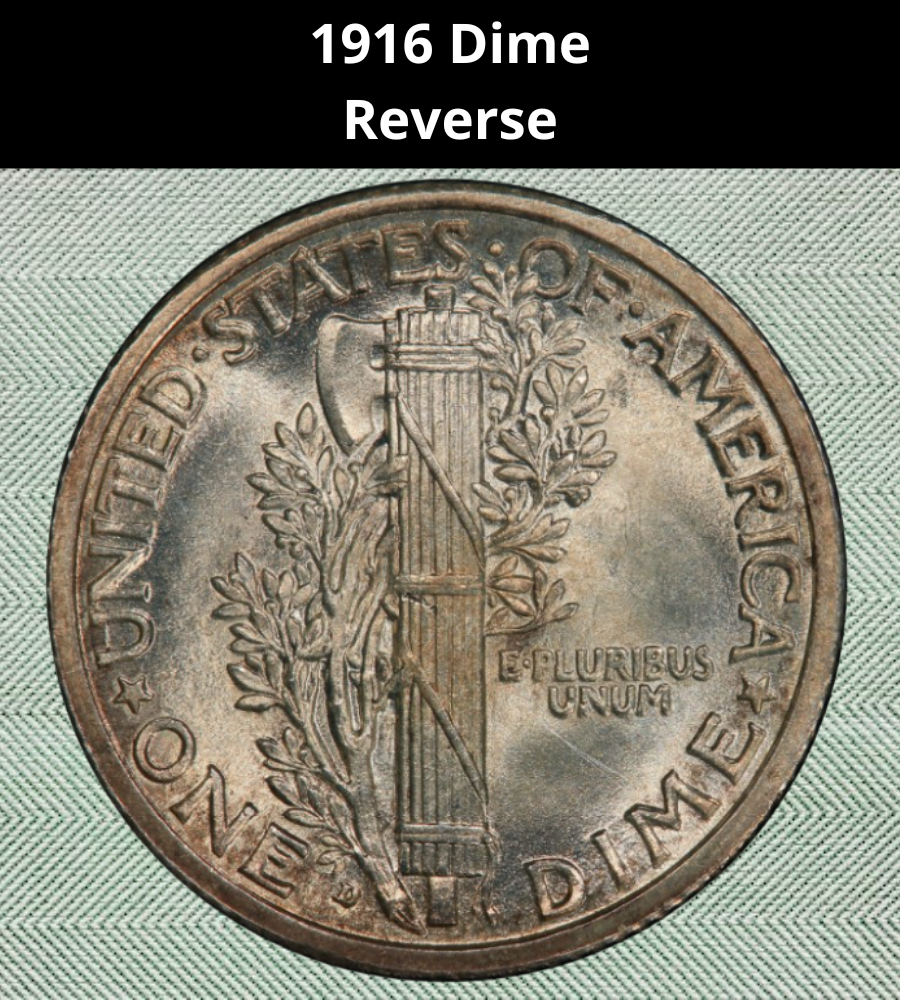
The reverse features a wreath composed of wheat, oak, corn, and cotton leaves (often mistaken for maple leaves due to their shape). The wreath is tied with a ribbon at the bottom, with the mint mark—if present—placed beneath it. Inside the wreath is the denomination ONE DIME.
Other Features of the 1916 Barber Dime
- Composition: 90% silver, 10% copper
- Diameter: 17.91 mm (0.705 in)
- Thickness: 1.35 mm (0.053 in)
- Weight: 2.5 g (0.08038 troy oz)
- Edge: Reeded, 118 reeds
- Notable Fact: The 1916 Barber dime shared identical specifications with its Mercury dime successor. Unlike the Mercury dime, no proof Barber dimes were struck in 1916.
1916 Dime Grading Guides
Like all U.S. coins, the 1916 Barber and Mercury dimes are graded on the Sheldon scale, which ranges from 1 (Basal State) to 70 (Perfect Mint State). Higher grades indicate better condition, sharper detail, and greater value.
For Mercury dimes, there’s an additional quality designation called FB (Full Bands). This refers to the clarity of the horizontal straps (bands) that bind the fasces on the reverse. A Mercury dime with sharp, fully separated bands receives the FB designation, indicating superior strike quality and commanding a premium in the market.
The Numismatic Guaranty Company (NGC) uses a similar designation for Roosevelt dimes called FT (Full Torch), but the concept is the same—highlighting full detail on a key design element.
Sheldon Scale Reference for 1916 Dimes
| # | Grade | Description |
|---|---|---|
| 1 | Basal State-1 | Barely identifiable; extreme wear. |
| 2 | Fair | Very worn; major devices outlined faintly. |
| 3 | Very Fair | Slightly more detail than Fair; still heavily worn. |
| 4–6 | Good | Major devices visible but worn; rims may merge with lettering. |
| 7–10 | Very Good | More details visible; lettering clearer. |
| 12–15 | Fine | Moderate wear; key details like LIBERTY (Barber) or cap wings (Mercury) visible. |
| 20–30 | Very Fine | Moderate wear on high points; wreath or fasces details clear. |
| 40 | Extremely Fine | Light wear on highest points; strong overall detail. |
| 50 | About Uncirculated | Slight wear visible; most luster intact. |
| 60 | Mint State | No wear; may have minor marks or blemishes. |
| 65 | Mint State (Gem) | Strong strike, full luster, and excellent eye appeal. |
| 70 | Mint State (Perfect) | Flawless under magnification; as struck. |
1916 Dime Value Guides
In 1916, two different dime designs were struck: the Barber Dime (last year of issue) and the brand-new Mercury Dime (also known as the Winged Liberty Head Dime).
The Mercury Dimes were minted in Philadelphia, San Francisco, and Denver, while the Barber Dimes were only produced in Philadelphia and San Francisco. None of the 1916 dimes were proofs—they were all regular business strikes intended for circulation.
Below is a breakdown of each type, its mintage, and current market values based on recent auction records and grading service estimates.
1916 No Mint Mark Mercury Dime Value (Philadelphia)
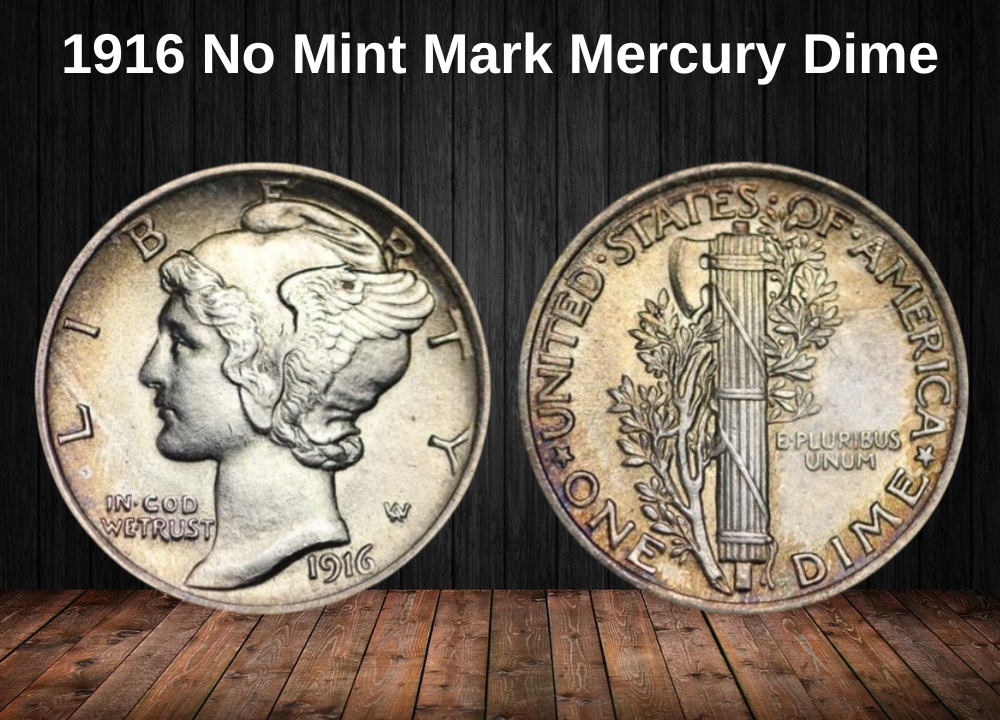
- Mintage: 22,180,080
- Auction Record: In November 2013, an NGC MS 67+ sold for $1,998.
- Current Value (May 2025):
- MS 67 (PCGS): $1,250 (7 known)
- MS 68+ FB: $27,500 (only example sold for $20,400 in Aug 2020)
1916-D Mercury Dime Value (Denver)
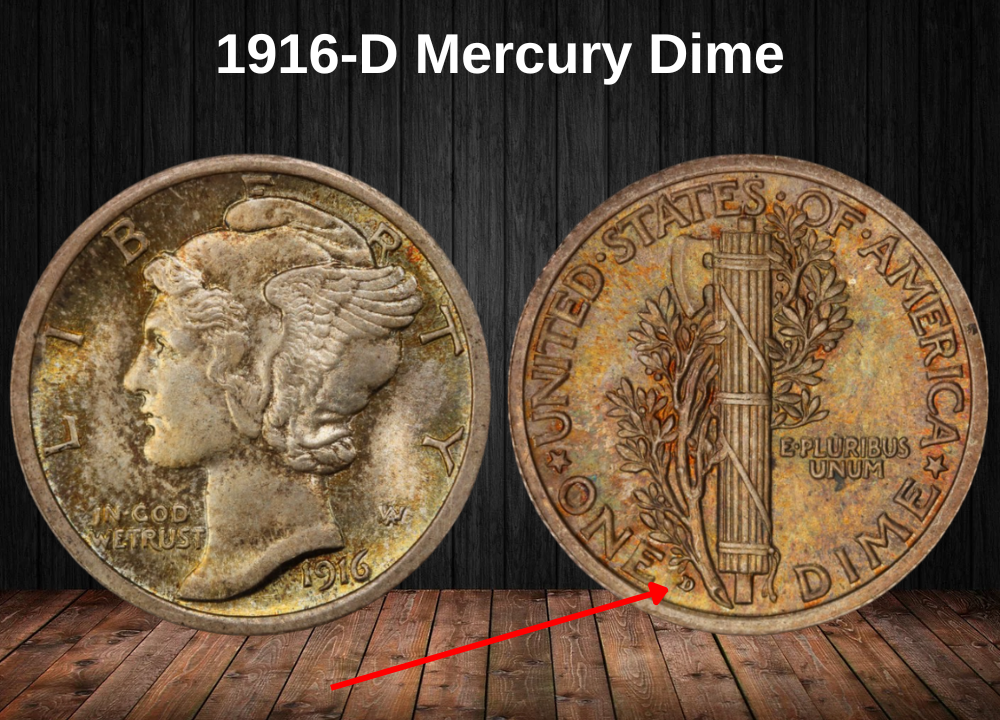
- Mintage: 264,000 — the lowest of the series and one of the most famous U.S. key dates.
- Auction Records & Values:
- MS 65: $33,500 (7 known; record $29,900 in Aug 2007)
- MS 66: $55,000
- MS 67 FB: $250,000 (sold for $207,000 in Aug 2010)
- MS 67+ FB: $300,000 (finest known)
1916-S Mercury Dime Value (San Francisco)
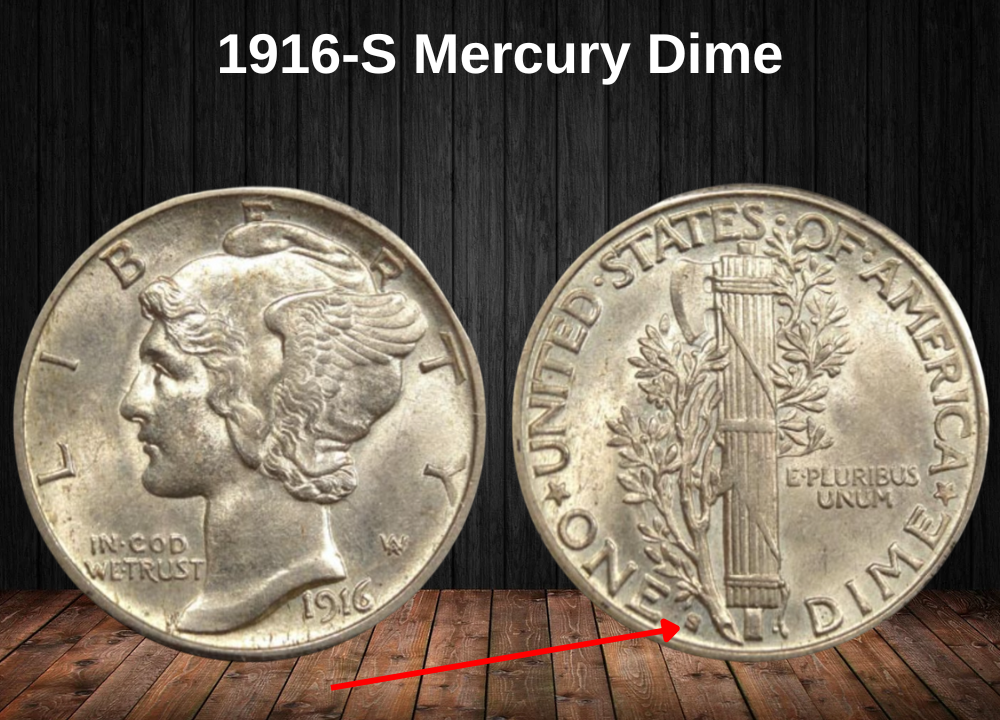
- Mintage: 10,450,000
- Auction Records & Values:
- MS 67+: $6,500 (2 known; sold for $4,406 in Mar 2013)
- MS 67 FB: $4,500 (sold for $23,000 in Aug 2001)
- MS 67+ FB: $14,500
1916 No Mint Mark Barber Dime Value (Philadelphia)
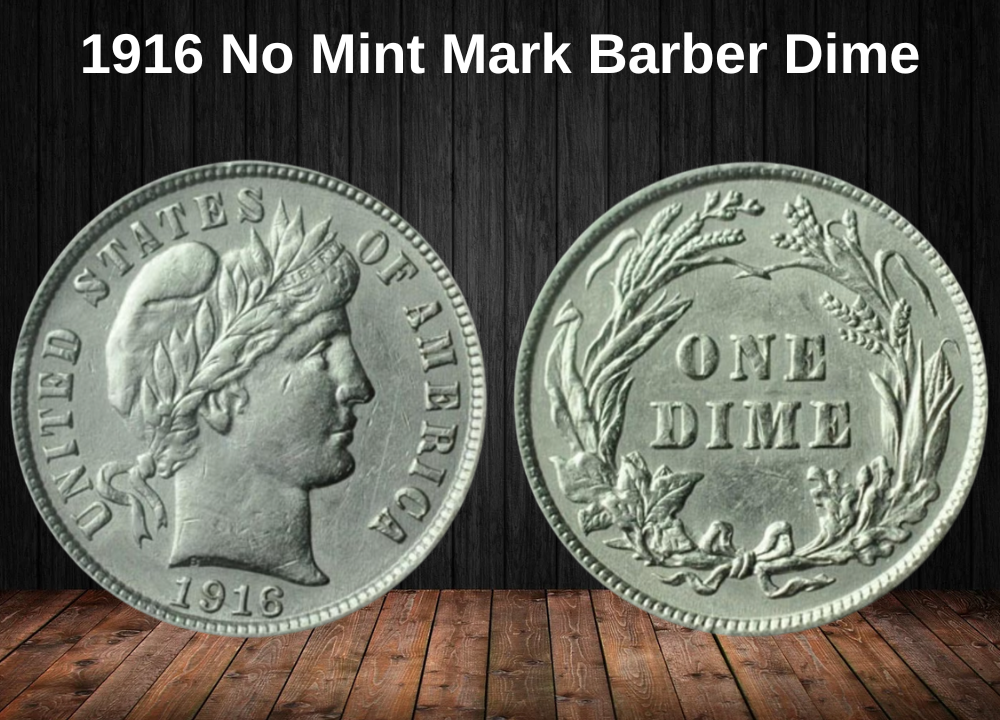
- Mintage: 18,490,000
- Notable Sales: A VF 25 sold for $46,000 in Sept 2005 (unusual market spike).
- Current Value (May 2025):
- VF 25: $30
- MS 67+: $4,500 (finest known)
1916-S Barber Dime Value (San Francisco)
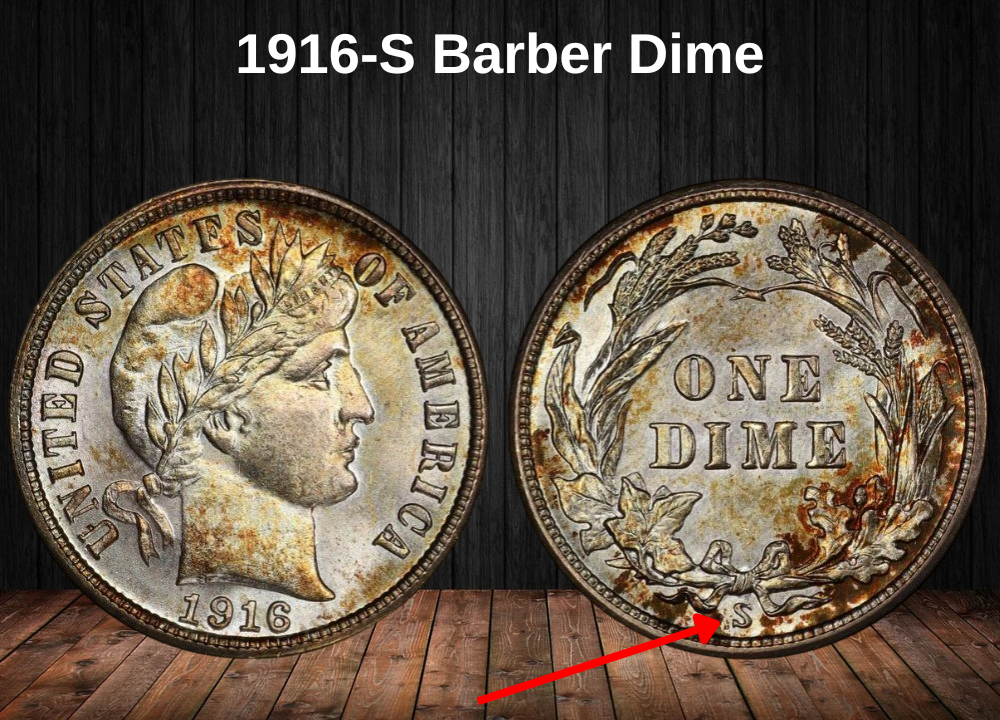
- Mintage: 5,820,000
- Auction Records & Values:
- MS 67: $9,000 (record $7,250 in Dec 2018; 3 known)
- MS 67+: $15,000 (only example graded)
- MS 65: $600
- MS 60: $210
Rare 1916 Dime Error Varieties
Collectors and numismatists prize error coins because of their rarity and visual appeal. Below are some notable 1916 dime mint errors and their auction values.
Broadstruck Errors
1916-S and 1916 (P) Barber Dime Broadstrike
- Collar failed to properly shape the coin, causing it to spread outward.
- AU 58: $400
- MS 65: $575
1916-D Mercury Dime Broadstrike
- Three-piece collar mold issue caused flattening and widening.
- XF 45: $6,900
Off-Center Strikes
1916-S Barber Dime Struck 10% Off-Center
- Planchet misaligned during striking, leaving part of the design missing.
- AU 58: $660
1916-S Mercury Dime Uncentered Blank
- Feeder finger misplacement caused partial blank areas on both sides.
- AU 50: $340
Struck-Through Errors
1916-S Barber Dime Struck Thru
- Foreign object between die and planchet obscured part of “OF” in legend.
- XF 45: $110
Where to Sell Your Dime Coin?
Now that you know the value of your dime, the next step is deciding where to sell it. There are several trusted options—both online and in person—that can help you get the best price depending on your coin’s rarity and condition.
To see the full list of recommended places, along with their advantages and disadvantages, check our complete guide on where to sell your dime coins.
1916 Dime FAQ
Who is on the 1916 Dime?
Both versions of the 1916 Dime feature Lady Liberty wearing a Phrygian cap. On the Barber Dime, she faces right, adorned with an olive wreath and a Liberty headband. On the Mercury Dime, she faces left, with detailed wings on her cap — a design often mistaken for the Roman god Mercury.
Where is the mint mark on a 1916 Dime?
On both coins, the mint mark appears on the reverse. On the 1916 Mercury Dime, it is located to the right of the word “One” in “One Dime.” On the Barber Dime, it is positioned beneath the ribbon that ties the wreath.
How much is a 1916 Dime worth today?
Values range from a few dollars for well-worn common-date coins to hundreds of thousands for rare varieties like the 1916-D Mercury Dime with Full Bands in high Mint State grades.
Why is the 1916-D Mercury Dime so valuable?
With a mintage of just 264,000 pieces, it is the lowest production number of the entire Mercury Dime series. Its rarity, especially in high grades with Full Bands detail, makes it one of the most sought-after U.S. coins.
What does “Full Bands” mean on a Mercury Dime?
Full Bands (FB) refers to the horizontal lines on the fasces (bundle of sticks) on the reverse being fully visible and separated. This is a sign of a strong strike and brings significant premiums.
How can I tell if my 1916 Dime is real?
Examine the coin’s weight (2.5 grams), diameter (17.91 mm), and silver content (90% silver, 10% copper). For high-value dates like the 1916-D, authentication by a professional grading service such as PCGS or NGC is strongly recommended to rule out counterfeits.
Did the 1916 Dime come in proof versions?
No — neither the 1916 Mercury Dime nor the 1916 Barber Dime was struck in proof. All coins from this year are regular business strikes intended for circulation.
How can I clean a 1916 Dime?
You shouldn’t. Cleaning coins can damage their surfaces and drastically reduce their value. Collectors prefer coins with their original toning and patina.
What metal is the 1916 Dime made of?
Both versions are 90% silver and 10% copper. This gives them a silver melt value, but collector demand typically makes them worth far more than their bullion content.
What are common 1916 Dime errors?
Popular errors include broadstrikes, off-center strikes, uncentered blanks, and struck-through errors. These can significantly increase the coin’s value, especially if the error is dramatic and the coin is in high grade.

